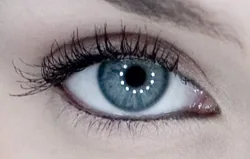Orbital Blowout Fracture
I’m Ed Smith, a Sacramento Eye Injury Attorney. Unfortunately, car accidents are a reality of life. Did you know that people can suffer severe facial fractures during an auto accident? An orbital blowout fracture represents a traumatic injury. Below, I will discuss this type of fracture in detail.
What is an Orbital Blowout Fracture?
There are two different classes that make up this type of fracture:
Open Door Fracture: This is the most common and most serious class. This represents a complete destruction of the orbital socket. The fractures are comminuted, or displaced from their original locations. The eye socket will appear larger than normal. The globe, or eyeball, will appear sunken back in the socket due to the destruction of the container. The patient will have significant double vision and a complete loss of sensation around the eye socket because the infraorbital nerve is also destroyed.
Trap Door Fracture: This fracture type is less common but is most commonly seen in children. There are minimal, non-displaced fractures throughout the orbital socket. The patient usually still has damage to the infraorbital nerve that leads to a loss of sensation around the cheek and the eyeball may still appear sunken.
What Causes this Fracture?
Patients will develop an orbital blowout fracture because of a direct force to the side of the head against the eyeball. When a significant force strikes the temple region, the ring that makes up the orbital socket is destabilized. Bones are not flexible and if the ring develops a significant break in one location, the entire socket will be obliterated, causing the blowout.
What Kind of Treatment is Necessary?
Almost all orbital blowout fractures are considered a catastrophic injury which will require surgery. If the fracture is small and the patient does not have any double vision, orbital floor damage, or damage to the extraocular muscles, then surgery isn’t necessary; however, few patients meet all of these criteria and surgery is used to put the orbital socket back together. Surgery may be postponed for a few days to allow swelling to subside.
Complications of an Orbital Blowout Fracture
The most common complication is infection as bacteria from the nose and mouth travel up into the eyes. This is treated with antibiotics. Patients will have restriction with certain movements of the eye which will create double vision, or diplopia, because the eyes are not aligned. Swelling can cause muscle and nerve entrapment that leads to difficulty with sensory and motor function in the area.
What Other Structures are at Risk?
The most commonly injured structure with this fracture is damage to the infraorbital nerve. This nerve comes out from the eye socket and provides sensation to the area around the eye and cheek. If this nerve is destroyed, the patient will lose this sensory function. This damage is considered permanent.
What else is on the Differential Diagnosis?
An orbital blowout fracture is in the same vicinity as several other type of bone fractures. These include:
- Malar Fracture
- Basilar skull fracture
- LeFort Fracture
A strike to the orbital region can also cause significant head and brain injuries such as:
- Epidural Hematoma
- Subdural Hematoma
- Intracranial Hemorrhage
A patient could have multiple types of injuries and they all range in severity from minor to life-threatening.
What is the Prognosis of this Injury?
The prognosis will depend on whether or not surgery is required and the potential for permanent muscle or facial nerve damage. Fractures usually heal with time; however, nerve injury is considered permanent. The extraocular muscles will require time to heal. They may also require traumatic injury rehabilitation. When these muscles return, the patient will regain movement of the affected eye if the nerves are intact.
Why Does a Patient Need Surgery?
An orbital blowout fracture will require surgery if the bones are displaced, the patient has double vision, the orbital floor is damaged, or if the muscles are entrapped. The bones first need to be in contact to heal appropriately. If not, the surgeon will put the bones in place to facilitate healing and restore facial symmetry for aesthetic reasons. If the orbital floor is involved, this needs to be addressed to prevent bacteria from coming up through the floor and causing infection. If muscles are entrapped, they must be freed to restore function and movement of the affected eye.
Related Articles by Ed Smith:
- Orbital Fractures
- Changes in Vision After Car Crash
- Facial Fractures in Auto Accidents
- Corneal Abrasions
- Eye Globe Rupture
Eye Injury Lawyers of Sacramento
I’m Ed Smith, a Sacramento Eye Injury Attorney. If you or someone you care about has suffered a serious eye injury due to the negligent actions of another, please call anytime at (916) 921-6400 or (800) 404-5400 for free, friendly advice.
We are proud to be Million Dollar Advocates in California. This is a group of top-ranking US Trial attorneys. Members of this group have obtained multiple million dollar settlements and verdicts for their clients.
Some of our past verdicts and settlements can be viewed here.
See our client reviews on Avvo, Google and/or Yelp.
Source of Orbital Blowout Fracture –
:dr bw

